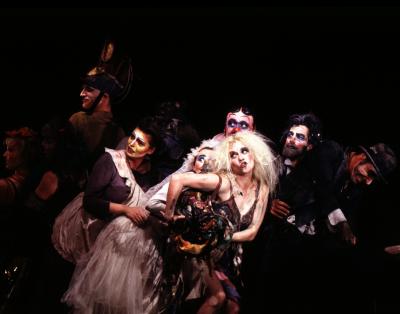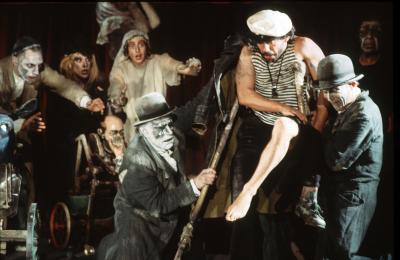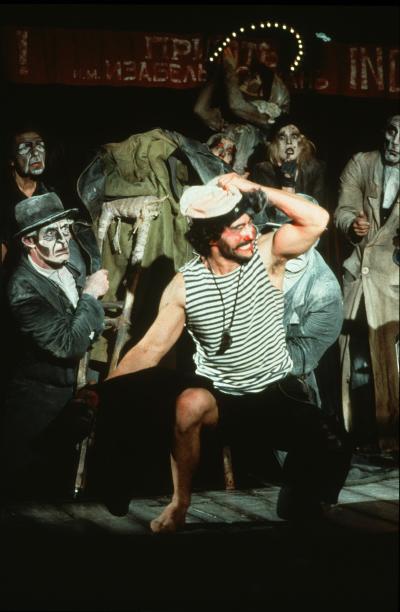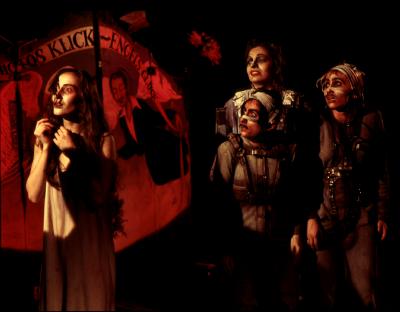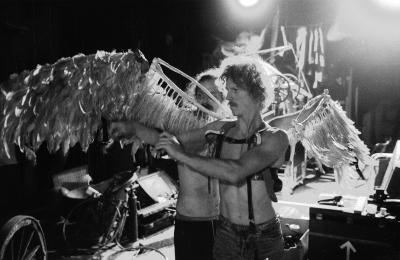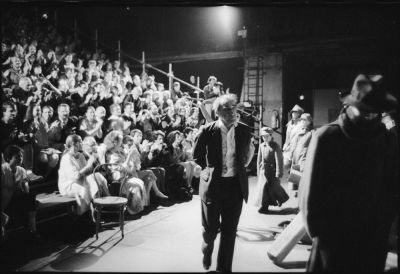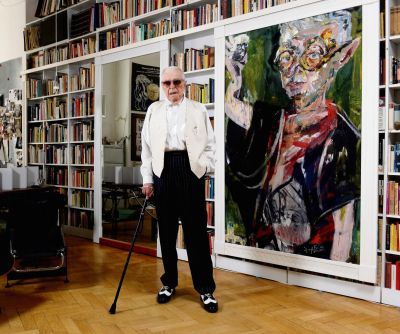Andrej Woron and his Teatr Kreatur
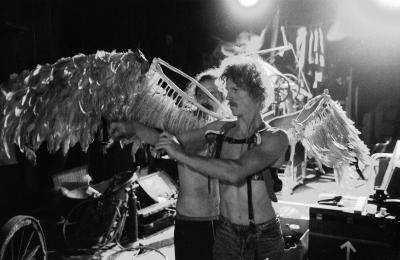
Andrej Woron, (real name Andrzej Woroniec) was born in Stare Juchy in eastern Poland in 1952. When he was 30 he moved to West Berlin. At the time he was already a fascinating painter and a graduate of the Warsaw Academy of Arts (1978), where he worked as a lecturer immediately after completing his studies. An offer of a job as a stage designer attracted him to West Berlin in 1982. He was bewitched by the freedom in the walled-in city and decided to remain. At first he kept his head above water by giving painting courses and taking small artistic engagements. But Andrej Woron’s immense talent and sheer boundless energy soon came to fruition in group and individual exhibitions in Berlin galleries. In 1987 he was finally given a job teaching painting at the Academy of Arts in West-Berlin.
Woron had finally made it in the city of his choice, but his artistic journey was far from an end. By chance he met a man called Allard Stupperich. Allard Stupperich came from a wealthy family and was of the opinion that one should not only take from art but also give something back. He thus became the patron, not only of Andrej Woron but also of “Teatr Kreatur” (Creature Theater) the group he founded in 1987. This was an optimal collaboration for both men. Whereas Allard Stupperich financed the art without interfering with the work of the artists, Andrej Woron was free to work independently and show his true potential. This synergy breathed new life into an old Kreuzberg factory turned arts centre: the “Theater am Ufer“ became the official residence of “Teatr Kreatur”.
This backyard in Kreuzberg was where Andrej Woron and his international star ensemble (most of its members came from Poland and Germany), presented their fringe theatre masterpieces. Audiences and critics alike were unanimous:
"Andrej Woron is probably the most exciting theatre maker in the city of Berlin and his Teatr Kreatur is a continually sold-out place of pilgrimage for maniacs who have turned their backs in disgust on dried-up subsidised theatre. A theatre miracle."
(DER SPIEGEL 28/1991)
“He refuses to intellectualise, flatten out, and translate his works to fit in with Western cultural tastes. His company curses in Polish and associates in Polish. The music is written by the Polish composer, Janusz Stokłosa, the posters designed by the Lithuanian, Stasys, and he takes the sensitive scenario from the Polish writer Tadeusz Słobodzianek. Teatr Kreatur is an island of Slavic spirit in the whole of Berlin.” (Die Zeit 48/1995)
Behind these successes was a lot of hard work. In the last stages of production Andrej Woron’s working day could last up to 16 hours. Nor did he spare his actors. They must have really believed in him, for at the start they could scarcely live off their earnings from fringe productions. But success proved Woron right and intensified his activities. The following shows were created under his direction in the tinyl theatre with an audience capacity of only 99 (before reconstruction):
1990 “Die Zimtläden” (The Cinnamon Shops), based on Bruno Schulz
1991 “Das Ende des Armenhauses” (The End of the Alms House), based on Isaak Babel
1993 “Ein Stück vom Paradies” (“A Piece of Paradise”), based on Itzik Manger (The Book of Paradise)
1993 “K”, based on Franz Kafka
1994 “Zug des Lazarus”
1995 “Der Prophet Ilja” by Tadeusz Słobodzianek
(Break for renovations)
1997 “Merlin”, based on Tadeusz Słobodzianek
1998 “Menschen Löwen Adler & Rebhühner” by Wieniamin Smiechow, freely adapted from Anton Chekhov’s “The Seagull”
1999 “Frankenstein - Genus Avium”, based on Wolfgang Deichsel
2000 “Wir gehen”, based on Jerzy Andrzejewski (The Gates of Paradise)
2001 “Hahnenkämme”, based on Christoph Klimke
2003 “Sanatorium zur Todesanzeiger” (“Sanatorium under the Sign of the Hour Glass”), based on Bruno Schulz
In the final scene of the play “Sanatorium under the Sign of the Hour Glass” the actors climbed onto the top of an aeroplane and took off. At the time Andrej Woron must have guessed that the plane would never land. “Sanatorium under the Sign of the Hour Glass” was to prove his last production with Teatr Kreatur. After Allard Stupperich’s inheritance was exhausted and the Berlin Senate refused to continue financing the company, Teatr Kreatur was forced to close.
Now Andrej Woron, who had consistently refused extremely lucrative offers from institutional theatres because he wished to remain independent, finally went out into the big, wide world. At the Bremen Municipal Theatre he directed “The Threepenny Opera” (Brecht/Weill), “Mahagonny“ (Brecht/Weill), “Baal“ (Brecht), “Kasimir and Karoline“ (Horvath), “The Clever Little Fox” (Janaceck), “Macbeth” (Shakespeare), and “Othello” (Verdi). At the Bielefeld Municipal Theatre he staged “Urfaust“ (Goethe), “The Persians” (Frederic Rzewski), “Amerika“ (Franz Kafka /Roman Haubenstock-Ramatis) and “Ahasver“ (Volker David Kirchner). At the Berliner Ensemble “Purgatorium” (George Tabori) and at the Volksbühne Berlin “Dead Souls“ (Gogol). At the, Mannheim National Theatre he was responsible for “The Magic Flute“ (Mozart) and at the Darmstadt Municipal Theatre, “Dr. Faustus“ (Marlowe), in Bremerhaven “Duke Bluebeard’s Castle“ (Bela Bartók), “Love and other Demons” (Péter Eötvös), “Der Freischütz” (Carl Maria von Weber); and also “Woyzek” (Georg Büchner) in Constanz and the St John’s Passion (Johann Sebastian Bach) in Osnabrück.
Adam Gusowski, 2015
Additional information:
The former “Theater am Ufer” and “Teatr Kreatur” is now a part of the “Hebbel am Ufer” Theatre. Since the two theatres were merged, the stage where “Teatr Kreatur” worked at Tempelhofer Ufer 10 is now called HAU3. Since the 2003/2004 season “Hebbel am Ufer” consists of HAU1: “Hebbeltheater”, HAU2: “Theater am Halleschen Ufer” and HAU3: “Theater am Ufer”.
